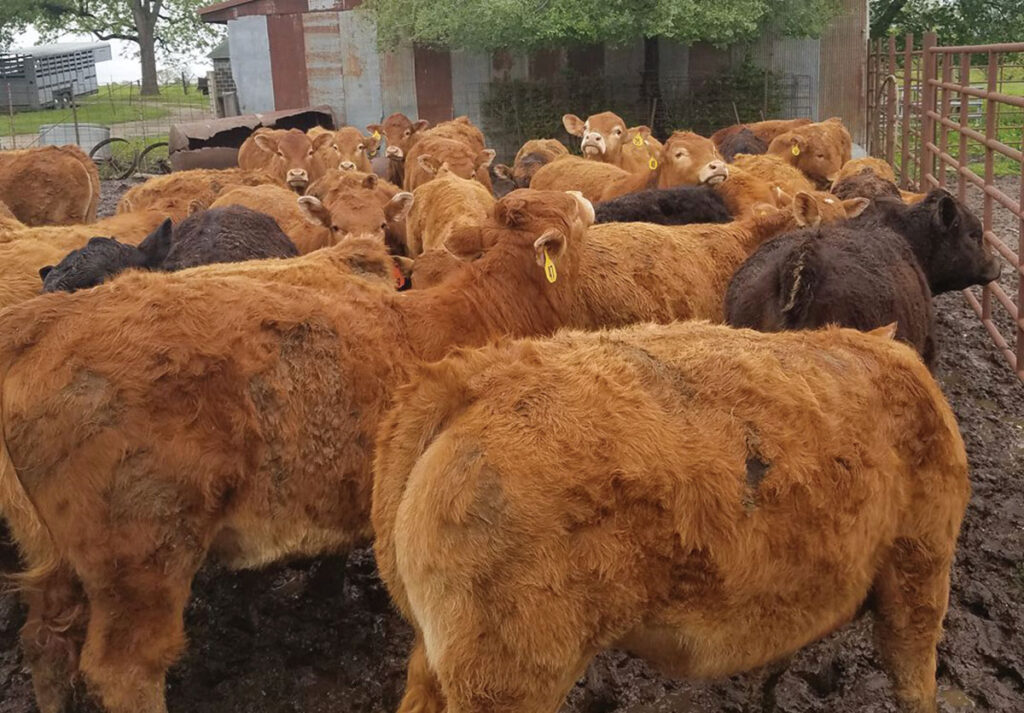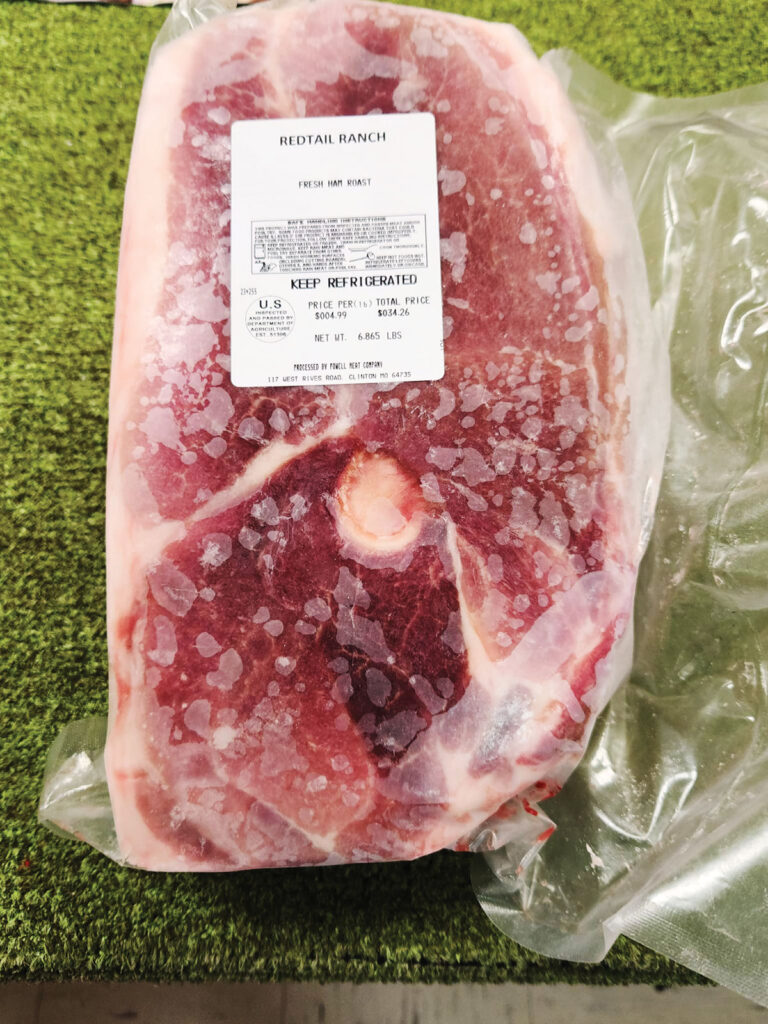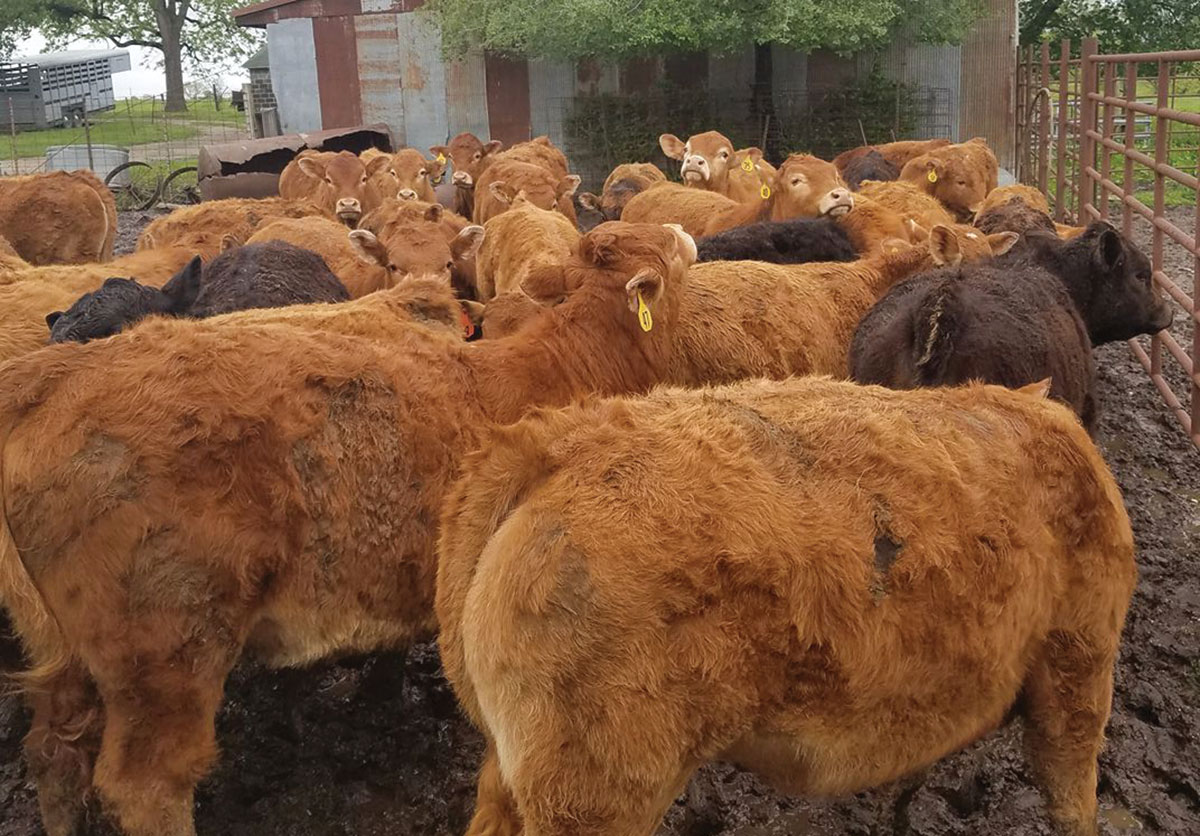
Red Trail Ranch offers customers all-natural Limousin beef and locally-sourced products
ARCHIE, MO. – Jim Crust has been a cattleman most of this life.
While still in high school, Jim began to grow a cattle operation. For several years, he was in business with his grandfather L.A., dad Willard, and brother Jerry.
“My brother and dad got out of it, then I got out of it for a couple of years and lived in Branson, (Mo.),” Jim recalled. “I decided that wasn’t for me, so I came back and got back in the cattle business with my granddad, and in 1994 I took everything over.”
That same year, Jim added a Limousin bull to his commercial Simmental/Angus cross herd.
“We were running SimAngus before it was popular,” Jim said with a laugh. “We’ve been breeding Limousin ever since and now, basically, have a purebred Limi herd.
“I liked the way they were built,” Jim. “They are a bigger, heavier muscled animal, and put a lot more muscle on their calves than any other breed I’ve ever seen; a Charolais might be a close second. Back in the 1970s, when we were raising Simmentals, I said if I wasn’t raising Simmentals I would be raising Limousin.”
Jim has 100 head at his 350-acre Red Tail Ranch, located just outside of Archie, Mo.
As he gets a little older, Jim said he appreciates the docility of the Limousin breed, but that wasn’t always the case.
“They used to be wild,” Jim said. “They have bred that out of them now. I got hooked up with a guy in Kansas, Gene Raymond of GV Limousin, and that’s where I started buying my bulls from. He had a very strict rule that if a bull ran to the back of the pen, they were gone. We’ve done strict culling ourselves.”
Red Tail Ranch has only a fall calving season.
“I think my calves wean off bigger being fall born than if they were spring born,” Jim said. “Another thing is you don’t have the rain like you do in the spring; cold rains cause problems. You can get cold rains in the fall, but normally it’s not the same situation. I think I have healthier animals. I don’t know if it’s because they go through the winter, but they seem to do better.”
Jim added that his calves average of about 600 pounds at weaning.
“My cattle run on pasture and grass all the time, and they come to the lot every day for their grain ration,” he said. “It makes my life a little easier when I want to sort them off.”
In the winter, cattle receive a “silage hay. Jim has developed the forage with Harrisonville-based Energy Curve Technology.
“They have biologics they spray on the hay and everything about it is organic, and it makes stuff grow,” Jim said. “They also spray the windrows as it goes into the baler. It breaks down the different sugars and gives you about the same feed value as corn. I still give a little grain ration, but the most I feed is 10 pounds, per head, per day. A full-blown feeding facility will do twice that.
“It is amazing. This year, we planted what we call ‘soybean succotash.’ It’s a forage bean and dwarf Sudan. One field, on the first cutting, was averaging 10 ton to the acre, the second was averaging 12 ton on the first cutting, and that’s in a drought year.”
Jim began retaining his heifers only three years ago.
“With the prices like they were, you couldn’t afford to sit on them,” he explained. “Then you wake up one day and you have a bunch of old cows. I save about 15 to 20 heifers a year now, and I’m breeding those heifers to a red LimFlex bull.
“I just got my first calves from him on the ground this fall, and they were perfect for first-calf heifers; I had no issues with calving them. They are also growing out pretty well. At some point, I’m going to put him with my mature herd, but he’s too young for that right now.”
Going to a LimFlex bull had more advantages than just calving ease.
“We sell the meat we raise,” he said. “Limousin cattle hang a very lean carcass. As far as intermuscular fat, they are probably the leanest breed out there. They also carry a gene called F94L, which has to do with building muscle and meat tenderness. People like to look at a steak and see some marbling, so that’s why I went with a LimFlex bull. He’s a 50/50 bull (half Red Angus, half Limousin), so that Red Angus will give me a quarter Red Angus calves and get me the marbling I want to see in my steaks.”
Jim’s beef business started with sales of butcher beef off the farm. He had a good customer base, but more and more people said they would like to buy Jim’s beef, but they did not have freezer space.
“I got the bright idea that I would send them to the processor and sell meat by the package,” he recalled. “We’ve been running a label and selling beef for 10 years now. People who were in the cattle business used to laugh at me, they thought I had lost my mind. Now, they are in the meat business. COVID made a lot of people get into the beef business pretty quick.”
About 40 head a year for retail sales, which are done through the Red Tail Ranch Beef storefront in Archie, which opened in 2013.
“You can come into my store and buy a 1-pound package of ground beef, all the way up to a whole beef,” Jim said, adding that a large portion of their business is from the Harrisonville, Raymore and Belton, Mo., areas. Jim’s wife Amy manages the store while he manages the cattle.
All the beef sold is from Jim’s herd, is all-natural, and free of antibiotics, animal byproducts and growth hormones.
“My ideal weight to finish them is 1,350 to 1,400 pounds,” Jim said. “We don’t always get them there because of the demand, so I have to send some a little earlier than I a like, at around 1,200 pounds.”

With the success of Red Tail Ranch Beef, added product lines.
“We have pork, whole chickens, lamb, local honey, everything we have, if I don’t raise it, comes from another small farm or business,” Jim said. “Our little store gets nothing off a truck. I don’t want to sell anything that isn’t quality.”
Jim purchases live animals, which are then processed with the Red Tail Ranch label. Chickens, however, carry the label of the originating farm.
“I’m just here to support the farmers, the people out there breaking their backs trying to make a living,” Jim said. “I also carry rice from a Sikeston rice farmer, spices from a small business and barbecue sauce from Rocheport; everything we do is that kind of product.”
One non-local product offered is fresh-off-the-boat shrimp from the Charleston, S.C., area. Amy is from the area and the couple travels from Missouri to the coast to pick up the fresh shrimp.
A few years ago, Jim learned of the USDA’s Value-Added Producer Grant. He mulled it over and applied for funding, which he was awarded.
“I applied thinking I wasn’t even going to get it,” Jim said. “We were making a lot of snack sticks, jerky, and things like that. In the USDA’s eyes, that’s value added; it was products that you took the next step with.
“It was most helpful. If anyone out there is doing something like this, I would recommend going for it. It helped us through some rough times. There are a lot of people out there who are thinking about doing something like this, but they haven’t pulled the trigger to do it.”
Jim’s plans for future include possibly partnering with other local producers to offer home delivery of meat, fresh vegetables and baked goods. He would also like to gradually expand his wholesale market
“The only thing I would do different is do this earlier in life, starting when I was much younger,” he said. “We have built ourselves a reputation and people know they are going to get a good product when they come to us, and I don’t want to do anything to jeopardize that trust. That trust is what build our business. I’m not a tech-savvy person, but I know how to raise cattle.”







